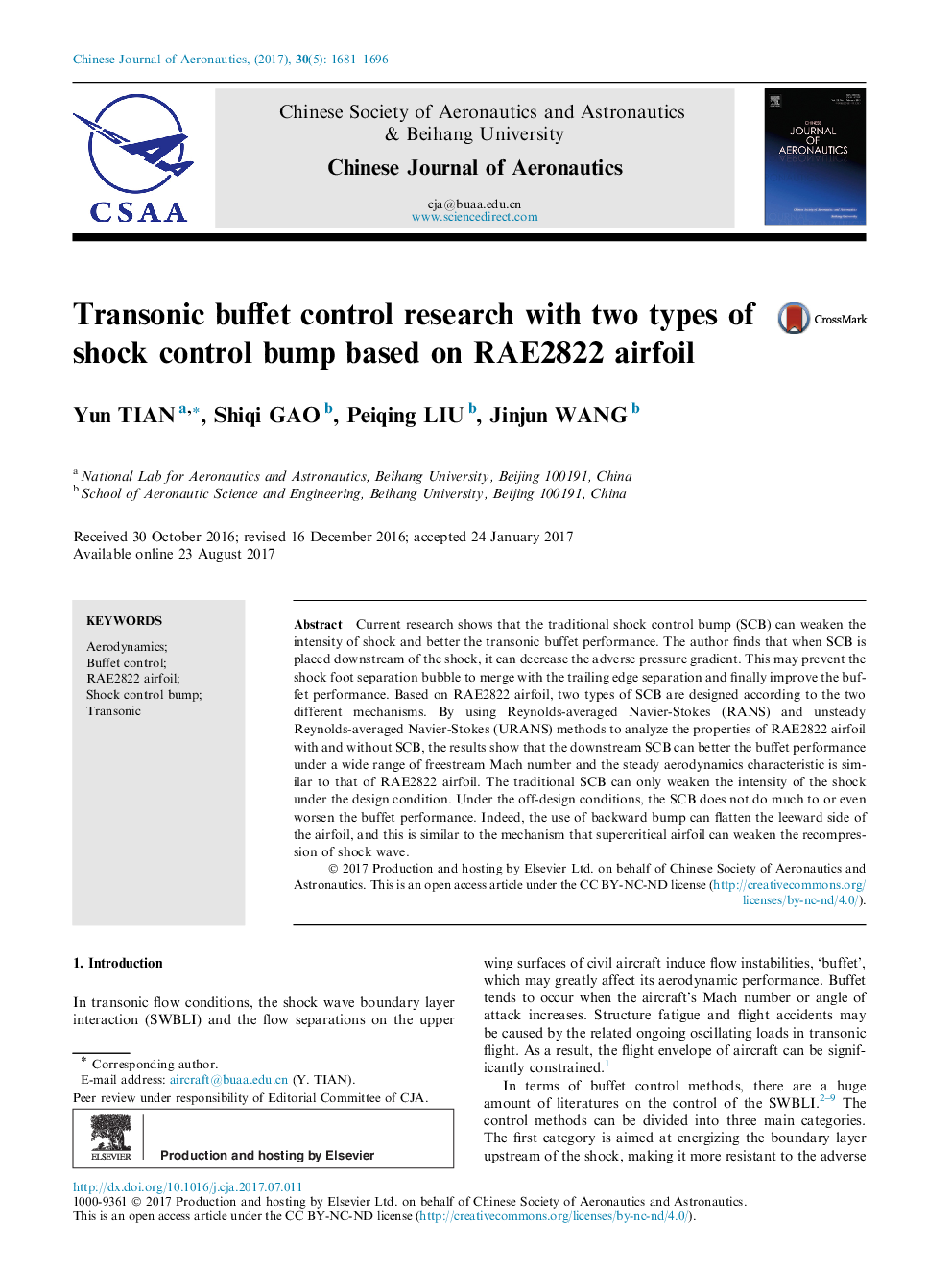| Article ID | Journal | Published Year | Pages | File Type |
|---|---|---|---|---|
| 7153891 | Chinese Journal of Aeronautics | 2017 | 16 Pages |
Abstract
Current research shows that the traditional shock control bump (SCB) can weaken the intensity of shock and better the transonic buffet performance. The author finds that when SCB is placed downstream of the shock, it can decrease the adverse pressure gradient. This may prevent the shock foot separation bubble to merge with the trailing edge separation and finally improve the buffet performance. Based on RAE2822 airfoil, two types of SCB are designed according to the two different mechanisms. By using Reynolds-averaged Navier-Stokes (RANS) and unsteady Reynolds-averaged Navier-Stokes (URANS) methods to analyze the properties of RAE2822 airfoil with and without SCB, the results show that the downstream SCB can better the buffet performance under a wide range of freestream Mach number and the steady aerodynamics characteristic is similar to that of RAE2822 airfoil. The traditional SCB can only weaken the intensity of the shock under the design condition. Under the off-design conditions, the SCB does not do much to or even worsen the buffet performance. Indeed, the use of backward bump can flatten the leeward side of the airfoil, and this is similar to the mechanism that supercritical airfoil can weaken the recompression of shock wave.
Keywords
Related Topics
Physical Sciences and Engineering
Engineering
Aerospace Engineering
Authors
Yun TIAN, Shiqi GAO, Peiqing LIU, Jinjun WANG,
